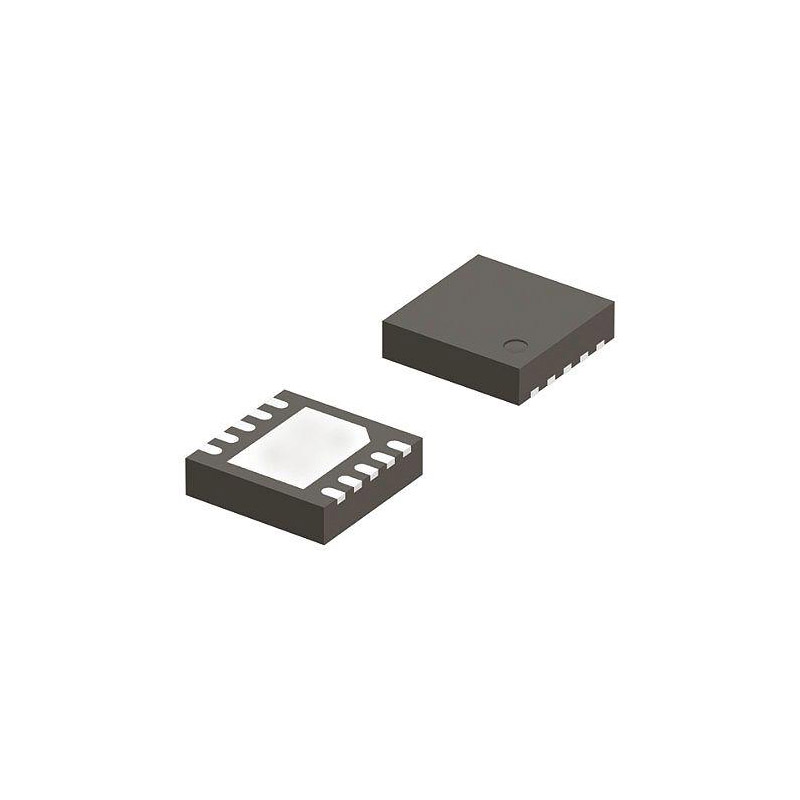How the Integrated DSPs Improve the Efficiency of Audio Amplifiers
Update Time: Apr 01, 2021 Readership: 2942
Contents
Have you ever thought that the integrated digital signal processor (DSP) in an audio amplifier was only for digital filters, equalization or audio mixing? The reality is that integrated DSPs in modern audio amplifiers can provide many more benefits, including increased efficiency of the amplifier and audio system.
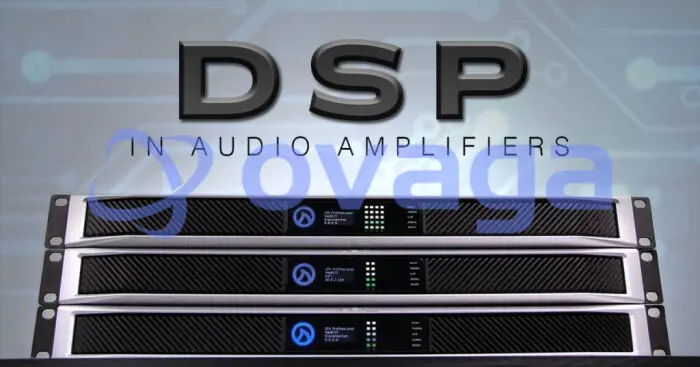
Battery-powered speakers are still one of the super-convenient methods of audio playback for indoor, outdoor or any other situation where music is played. In this article, I'll discuss how an audio amplifier with an integrated DSP can improve the efficiency and extend the runtime of your speakers.
The Impact of Battery Life on Speakers
Obviously, consumers want portable speakers that will last longer to play their favorite playlists or podcasts and require less time to recharge. Speaker manufacturing companies have taken note of this, sometimes even listing the speaker's play time on retail packaging.
If battery life is so important for portable speakers, then you should go with a higher capacity battery, right? That's true for some designs, but there simply isn't enough room for compact speakers. Or, additional battery capacity may add significantly to the cost of the system.
Without the flexibility to increase battery capacity, the question for designers becomes, "How can I achieve longer playback time with the same capacity battery?" The answer is to increase efficiency. For audio applications, the more efficient amplifier for medium to high power (assuming greater than 10W) remains the Class D amplifier, which has a theoretical efficiency of 100% (actually greater than 90%).
While greater than 90% efficiency is the benchmark, this is typically the result obtained in the lab using constant input signal and output power measurements. In practice, for a typical audio clip or song, the measured amplifier efficiency will vary constantly depending on the output power provided. This is because at lower output powers, the rate of power loss due to heat in the amplifier's metal oxide semiconductor field effect transistors increases.
In order to reduce these unnecessary losses, the simplest solution is to reduce the voltage of the power supply. For audio, designers may be reluctant to do so because reducing the supply voltage may reduce the system's ability to deliver higher output power, especially peak power in the higher dynamic range.
Battery Life Solutions for Medium to High Power Speakers
In order to improve efficiency without affecting output power, TI introduced the TAS5825P Class D audio amplifier using Hybrid-Pro algorithm in the DSP, the amplifier can improve system efficiency and reduce unnecessary losses by continuously analyzing the input audio signal and providing pulse-width modulation feedback to the external DC/DC converter.
Using feedback, the DC/DC converter can increase the supply voltage when audio peaks are required and decrease the supply voltage when higher output power is not needed. This feature reduces power consumption and improves efficiency when playing audio at low volumes without limiting the amplifier's ability to deliver maximum output power. Figure 1 shows the block diagram of the TAS5825P.
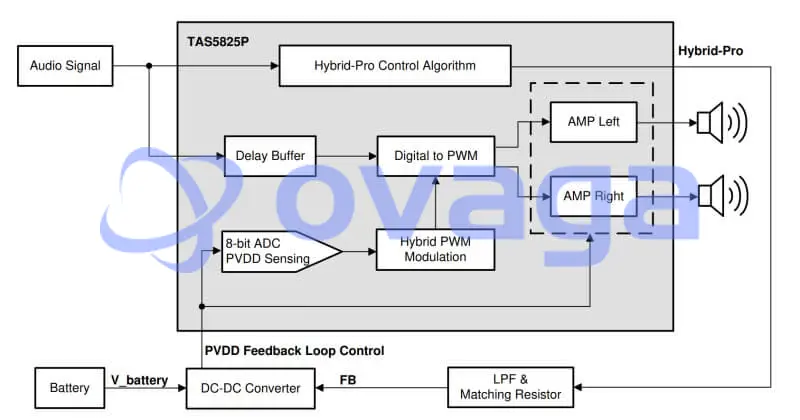
Figure 1: TAS5825P block diagram
The Hybrid-Pro concept is simple, and it is the same way we try to save energy at home or at work. For example, when not using the lights in a room, you would turn them off to reduce your electricity bill. With audio amplifiers, however, you don't want to just turn off the music! For a more accurate comparison, think of the Hybrid-Pro as an automatic dimmer. Instead of turning off the lights (the audio amplifier), the light sensor automatically dims the lights to exactly the brightness needed at that moment (the amplifier's supply voltage). Figure 2 illustrates this concept, where the amplifier's supply voltage (PVDD) increases as the desired output voltage increases.
![]()
Figure 2: TAS5825P Hybrid-Pro Envelope Tracking
Enabling Hybrid-Pro runtime testing allows battery-powered loudspeakers to achieve longer runtimes. Compared to a typical amplifier with a fixed voltage rail, the TAS5825P configured in Hybrid-Pro mode can extend battery life by more than 20%. In addition, the adjustable audio advance buffer in the TAS5825P provides advanced voltage rail control without the risk of audio clipping.
Although DSPs have only been used for equalization and audio filtering in the past, the benefits of integrating DSPs in audio amplifiers are unprecedented. ti's class-D audio amplifier product line with integrated DSPs continues to push the limits and achieve higher system-level efficiency.
Popular Blogs
-
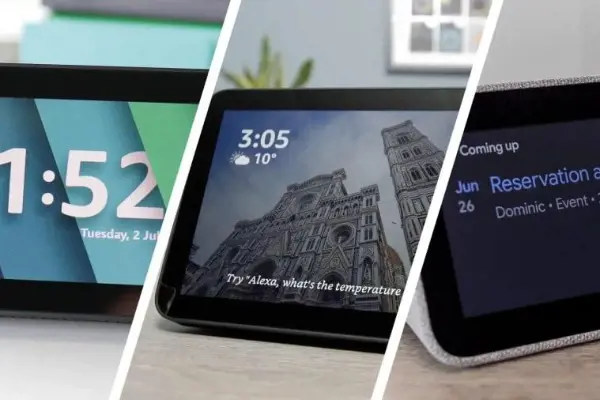
Creating a Superior ...
In today's world, technology has become an essen...
-
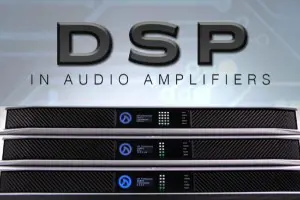
How the Integrated D...
In order to improve efficiency without affecting...
-
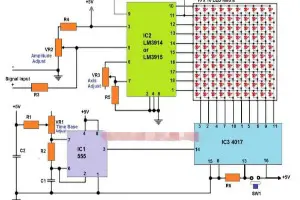
Simple LED Oscillosc...
The simple LED oscilloscope circuit presented in...
-
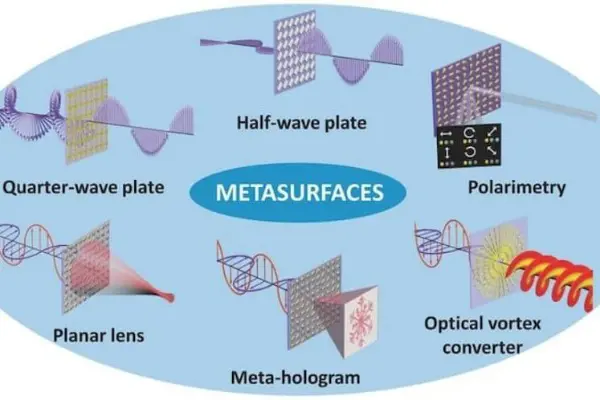
Could Super-surfaces...
A major focus of technological advances in many ...




